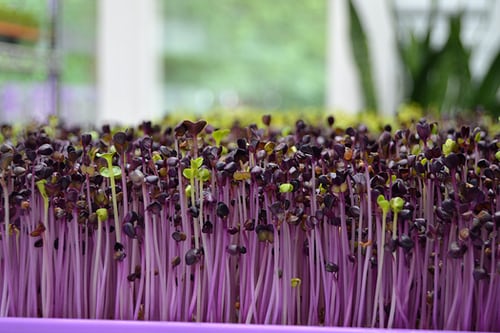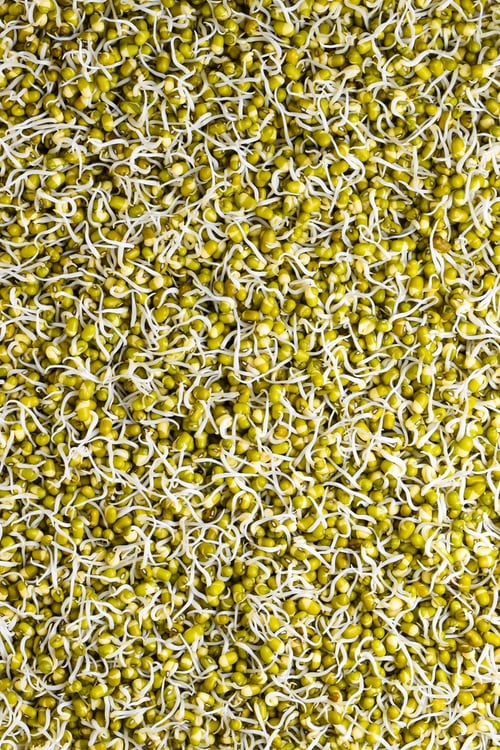Microgreens, a younger version of matured veggies, are sometimes misunderstood as sprouts.
But in reality they are completely different with the taste, looks as well as the way they are grown.
Let us learn more about microgreens and sprouts.
Microgreens:

Microgreens as name suggests, are smaller versions of matured greens which contain nutrients 40% higher than their matured counterparts.
Sprouts:

Sprouts are generally seeds that get converted into tiny plants which are a source of nutrients with no calories.
Here’s how two greens are completely different:
Growing media:
Microgreens can be grown with or without soil. Coco coir can also be used as a growing medium. All you need is a container, sunlight, microgreen seeds, water. Whereas in case of sprouts water is the only media to be used. They don’t need any extra nutrition. They utilize the nutrients gathered in the endosperm.
Way of growing:
Microgreens are generally grown like regular greens. Usually microgreens take 2 weeks to grow. They are watered and kept in the dark till germination. Once they germinate they are exposed to sunlight and harvested when they grow upto 2 to 4 inch tall. Ventilation and sunlight is necessary to avoid bacterial growth.
Sprouts are grown with no extra nutrients. They require high humidity and indirect sunlight during growth. It is suggested to keep rinsing the sprouts to keep them away from bacterial growth.
Harvest:
Microgreens are harvested generally using a scissor or knife. They are trimmed right above the soil level. It takes 12 to 14 days for microgreens to be ready for harvesting.
The sprouts when they start to germinate, they are supplied with indirect sunlight. Sprouts will be usually ready for the harvest by 5 to 6 days. Rinse and dry them thoroughly using paper towels before adding them in your dishes.
Nutritional value and uses:
Microgreens are full of nutrients and are proven for 40% higher concentration of nutrients than their matured counterparts. They can be used in salads, smoothies, garnishing purposes etc. It is advised not to cook the microgreens as they may lose some of the nutrients. Do check out our previous blogs to know more about the nutritional contents of microgreens.
Sprouts contain comparatively less nutrients than microgreens but are full of proteins and fibres. They are used in sandwiches, salads and as toppings on dishes. They don’t have a flavour.
Storage:
Microgreens can be stored in a glass of water to stay fresh, they can also be wrapped in a paper towel or a glass container. But it is always better to consume microgreens as soon as possible.
Sprouts have to be dried and properly sealed in a container to stay fresh. They can be stored for weeks and still stay fresh.
| Characteristics | Microgreens | Sprouts |
| Leaves | True leaves | Seed leaves |
| Nutritional content | More | Comparatively less |
| Harvest time | 12 – 14 days | 4 – 6 days |
| Growth media | Either soil or Hydroponic system | Hydroponic system |
| Sunlight | Direct | Indirect |
| Ventilation | Not required | Required |
| Uses | Versatile | Limited |
| Fiber content | More | Comparatively less |
| Varieties | More | Limited |
| Cost | Expensive | Cheap |
Final thought:
We hope this has helped you know more about the microgreens and sprouts.
Check out our recent blog Do’s and Don’ts of Microgreens which may help you out in growing microgreens.


